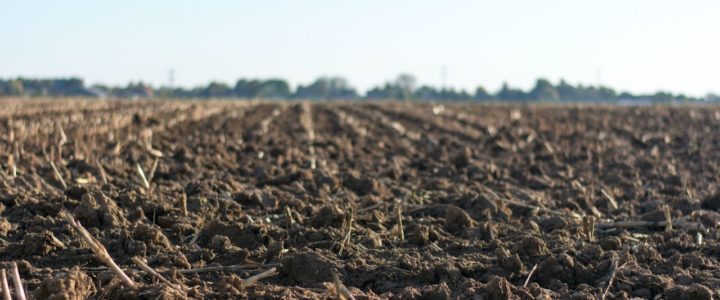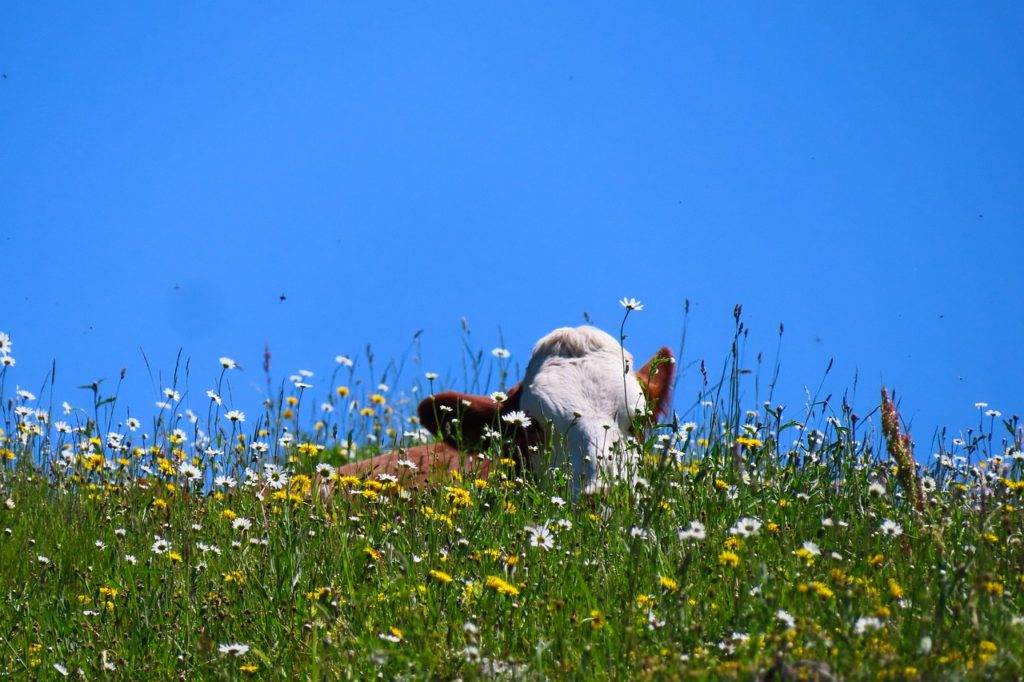
Soil might not be sexy, but it’s as necessary for human life on Earth as oxygen.
It isn’t obvious to look at, but soil is alive. A thriving community. In 1 teaspoon of healthy soil there are more bacteria, fungi and microbes than there are humans on Earth! Soil is the physical support and anchorage for plant and tree roots; it’s the place where the roots absorb moisture and nutrients, and where gaseous exchange occurs; soil filters water and regulates the release of it, which minimizes flooding; it absorbs some pollutants, maintaining the quality of groundwater; it provides the basis for some construction and manufacturing materials; it’s the habitat for essential microorganisms; and it provides a record of past environmental conditions. And it stores carbon dioxide. Lots of it. A few years ago, the Food and Agriculture Organization of the United Nations (FAO) found the top 30cm of the world’s soil contains almost twice as much carbon as the atmosphere. It’s the second largest carbon sink after the oceans, outpacing the CO2 absorption by the planet’s vegetation nearly three times over. Not only is this helpful in our fight against global warming from excess atmospheric CO2, the soil based carbon helps the soil release nutrients and maintain its structure, which facilitates better water retention.
Let’s dig a little deeper.
When plants photosynthesize they absorb carbon from the atmosphere. When they die, that carbon is deposited into the soil. It can be stored there for centuries (particularly if the carbon is very deeply buried or fossilized, or the soil is frozen) or gobbled up by microorganisms, hence continuing as part of the carbon cycle. At this point it’s important to remember that there is a carbon cycle: it’s a flow and dynamic in nature. We do not expect carbon to remain permanently in any one place. The other somewhat cyclic element is the soil itself. It’s made largely from the bedrock of Earth – through a slow, lengthy process. Faster than it can be made, we are losing it. Soil erosion is occurring by wind, water and agricultural activities. And agriculture covers a mind blowing 50% of the Earth’s habitable land. But why is erosion so alarming? Thinning soil is less productive soil, because it can’t hold water or nutrients as effectively. This leads to the decreased ability to grow crops and vegetation. With fewer root systems, wind and water erosion happens more readily. This soil loss, and disturbance through activities like tilling, means the release of the carbon which it has been storing. But poorer quality soil also holds less carbon, in addition to less nutrients and water. As is becoming more appreciated, there are feedback loops and relationships between every living organism and all planetary systems.

So with the clear importance of soil it’s not surprising that there is a lot of research being done to work out how we can monitor, protect and improve it.
One study in the UK looked at the rates of erosion to understand the significance of the problem. They used cosmogenically derived rates of erosion and soil formation to in a first-order lifespan model to assess soil which currently supports agriculture. They found that there could expect to be a loss of the top 30cm of soil (critical to be in good condition for successful agriculture) over the coming 138 years – with emerging bedrock replacing it in 212 years. This is definitely a big concern. Especially as the researchers acknowledge that in the UK the soils are generally in quite good condition, while in Sub-Saharan Africa, Asia, Latin America and The Caribbean soil degradation is happening far faster.
With the amount of land being used for agriculture, and the vast majority of that being dedicated to animal agriculture (77%, according to Our World in data), it shouldn’t be surprising then that there would be a link between soil health and certain animal agriculture inputs. A recent study, which appeared in the journal Soil Biology and Biochemistry in Dec 2021, sought to understand possible interactions between livestock antibiotics, a warming climate and soil microbial activity. Many antibiotics are poorly metabolized, so much of them are still biologically active when they enter the environment through animal waste (the same is true of many human antibiotics). The team treated soil samples with high, low or no dose of a particular antibiotic which is used on cows (never humans) and has widespread use due to being inexpensive and not requiring a veterinary feed directive. They found that the presence of the antibiotic diminished microbial activity – but applying an increasing temperature saw a combination of decreased microbial activity; decreased diversity of microbes because the bacterial colonies collapsed allowing fungi to dominate; and perhaps most worryingly, the double-whammy of decreased ability of the soil to store carbon and the increased chance of the soil to release carbon.

What can be done then, to protect the world’s soil, and preserve – or improve – the quality of it? The answer lies, for the most part, with regenerative agriculture. This is where farmers have a deep knowledge of the land – not just their crop of choice – but the whole picture. After all, the type and quality of the soil should actually determine what type of agriculture they choose, right off the bat. So regen ag is about monitoring and caring for the land, really listening for the signals it gives us – let’s not forget this was the norm for thousands of years for Indigenous Peoples all over the world. Regenerative agriculture has some key steps to undertake, which in a relatively short period of time, will reward the farmer with top quality top soil. These activities are:
- no-tilling, where there is no heavy machinery turning the soil over;
- cover cropping, where the land between rows of crops is covered in another type of vegetation;
- intercropping, where two crops are grown together in a very organized fashion and they have a symbiotic benefit to each other, like tomatoes and coffee;
- composting, where organic waste is recycled to increase the nutrient content of the soil while simultaneously reducing methane emissions;
- silvopasture, where livestock grazes on land which is heavily populated with trees and left essentially wild;
- crop rotation, where every 2-3 years the crops of choice changes completely; and
- pasture cropping, where livestock are let run free on land which is going to have a crop installed, or from the other angle – a food crop is planted when the livestock forage crop is dormant.
The urgency of the issue is proven by the number of organizations now focused solely on soil and its health. This includes the following – and this list is in no way exhaustive! The FAO of the United Nations has the Global Soil Partnership; there is The Land Institute; Global Soil Biodiversity Initiative; the Soil Association; American Farmland Trust; the African Forest Landscape Restoration Initiative; and Kiss The Ground. Fair to say, that soil health is being taken as seriously as it should be. The improvement and preservation of soil health is imperative for the world’s food security and the fight against the climate crisis. And this is another problem for which we have the answers – right at our feet.


